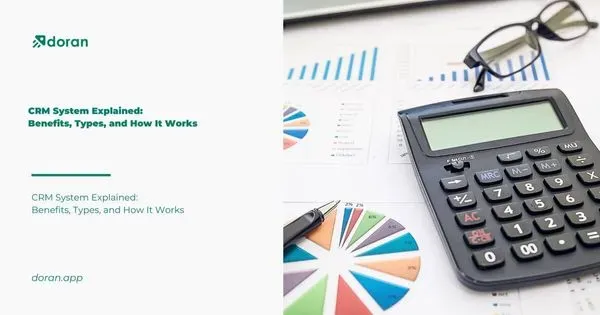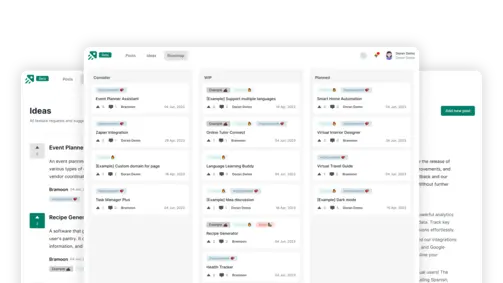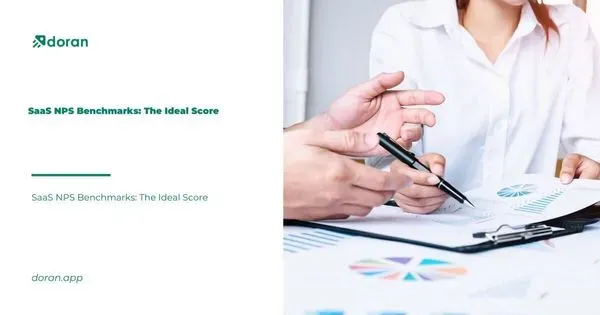Optimizing for Market Dynamics: 3 Application Roadmap Examples
Create changelog and product roadmap for your product
Explore nowTable of contents 7 min
In the fast-paced world of technology, a well-structured application roadmap is your guide to success. This article explores the significance of application roadmap examples. It provides a window into how businesses from various sectors utilize these roadmaps to align their technology strategies, adapt to evolving market demands, and drive innovation in their digital solutions. Whether you’re an IT professional, entrepreneur, or strategist, these real-world examples provide a blueprint for navigating the complexities of the tech landscape.
What is an Application Roadmap?
Let’s find out about the definition of the application roadmap before looking into some application roadmap examples.
An application roadmap is a high-level overview of the evolution of your product that includes the features you intend to add, the problems those features are expected to answer, and the long-term business objectives that your product should assist you in achieving.
Let’s examine a fictional SaaS business that creates payment APIs for e-commerce websites in order to gain a better understanding. Let’s say that this business wishes to introduce a new deceptive function to assist clients in recovering unsuccessful payments. If so, their product plan will contain things like:
-
Functionality: Introduce an automated dunning mechanism that attempts unsuccessful payments again.
-
Challenges: Assist clients in recovering 70% to 90% of declined payments
-
Measures or Overall objectives: This year, we want to increase our revenue by 10%, and we’ll charge 3.5% of each successfully recovered transaction.
-
Timeline: Within the next six months, launch our dunning feature.
The features a product team wishes to provide, their business objectives, the schedule, and the issue the feature is meant to address for their users are all included in a roadmap.
It basically acts as a single place where all product team members—engineering, marketing, growth, and design—can collaborate, exchange ideas, and guarantee that features and products are released on schedule and under budget.
Read more: 5 Best Recommended Tools for Roadmap
Roadmap Types
Product teams utilize roadmaps of four primary sorts to manage the development process. The primary distinctions between them are what they contain, who they are intended for, and how the product management process uses them.
Customer-focused Roadmaps
Customer-focused roadmaps assist you in soliciting customer feedback, sharing your product vision with them, and updating them on developments as the product is developed. In this manner, users can:
-
Ask for particular features.
-
Cast your vote for upcoming products.
-
Comment on the open tickets.
-
Enroll in a beta testing programme before a feature is released.
For example, Front provides a public roadmap so users can follow past releases, see what features are being developed, and vote on features to rank the highest priority according to their importance.
Github’s internal application roadmap is divided into quarterly sprints that display features that have already been released, those that are planned, and the team’s current status in the development process. Users can follow Buffer’s past, present, and future releases, upvote features, give comments, and track projects as they move from to-do (i.e., exploring) to be done on Trello, where the company hosts their public roadmap.
Delivery-focused Roadmaps
Delivery-focused roadmaps, as the name suggests, assist you in monitoring features as they move from planned to deliver. Most of their attention is on introducing new features and communicating with stakeholders, such as investors and the C-Suite.
It could be useful to compare a delivery-focused roadmap with other kinds, such as a customer-focused roadmap, to have a better understanding. A delivery-focused roadmap functions as a high-level to-do list where a product team crosses off action items and tracks features from to-do to done. The fundamental objective of a customer-focused roadmap is to assist a product team in communicating with their users and involving them in the development process.
Leadership Roadmaps
Product managers can inform senior leadership of a company—who might not be directly involved in the development process—about how a product is progressing, any obstacles they may be encountering, and any diversions they have had to take with the aid of leadership roadmaps.
Business Roadmaps
A product team’s vision, goals, and a basic outline of the strategies they plan to employ to reach those goals are all displayed in a company (or business) roadmap, which functions as a kind of general blueprint. Business roadmaps tend to be low on technical details and high on aspirational aspirations.
Find out more: The Ultimate Roadmap for Business Excellence: Strategies and Examples
3 Insightful Application Roadmap Examples
Here are 3 2023 application roadmap examples:
Software Application Roadmaps

Software application roadmap is the first name in our application roadmap examples. Any high-level document that a software product team uses to organize their work, choose which features to develop, keep track of releases, and collaborate on product development is referred to as a software application roadmap. It serves as a catch-all word for several types of application roadmaps, such as sprint plans and release plans.
Release Plans

Next up in our list of application roadmap examples is the release plan. A product team uses a release plan, which is a blueprint, to record and monitor the features they want to deploy in the next cycle of product releases, which typically lasts one quarter. Typically, a release strategy consists of:
-
Features that the product team intends to release
-
A user story that describes the feature’s operation from the viewpoint of the users
-
Action items and tasks (in priority order) that must be finished for the feature or features under development to be successfully shipped
-
The (estimated) velocity of the product team, or the average amount of time it takes them to finish a work, and the objectives that must be met for that release cycle to be effective
A release plan functions as a more short-term (often quarterly) planner than an application roadmap, which is the central hub for all long-term (typically 12 months or longer) planning for the product development process.
Sprint Planning Roadmaps

Sprint planning roadmap is the name that can’t be left out in our application roadmap examples. Agile methodology-using product teams usually utilize a sprint planning roadmap. It focuses on organizing the features a team wants to deliver in upcoming sprints, designates a team member for each action item, and acts as an authoritative source for agile product management teams.
Typically, a sprint planning roadmap consists of the following:
-
The product team’s objectives, which typically include releasing a product, an update, a patch, or a bug repair, as well as the method by which they intend to accomplish those objectives
-
A division of the previously described objectives into more manageable jobs and action items
-
User stories that outline the features or product you plan to develop from the viewpoint of your ideal user persona
-
A plan for product release
-
An accessible feedback system that allows stakeholders and users to remark
Sprint plans are intended to be strictly aspirational since they concentrate on developing a product vision. In contrast, application roadmaps are typically considered dynamic documents that change with the product.
As we conclude our exploration of application roadmap examples, it’s clear that roadmaps are more than just planning tools; they are dynamic instruments organizations use to navigate the complex tech landscape. Whether it’s guiding application development, fostering innovation, or adapting to ever-changing market dynamics, these examples showcase the power of well-structured application roadmaps. By integrating the insights from this guide, you’re poised not only to understand the strategic value of application roadmaps but also to use them as dynamic tools for enhancing your digital solutions, fostering innovation, and adapting to the ever-evolving world of technology.
What to not miss out on our blog
Gain insightful knowledge and invaluable experiences from dedicated experts.

CRM System Explained: Benefits, Types, and How It Works
Discover everything about CRM system. Learn the benefits and how a CRM system works to improve customer relationships and streamline business operations.

Are you ready? Start your free trial today.
Enhance communication, keep track of the progress, understand customers' insight and more by taking your first trial on Doran.
Sign up for free

